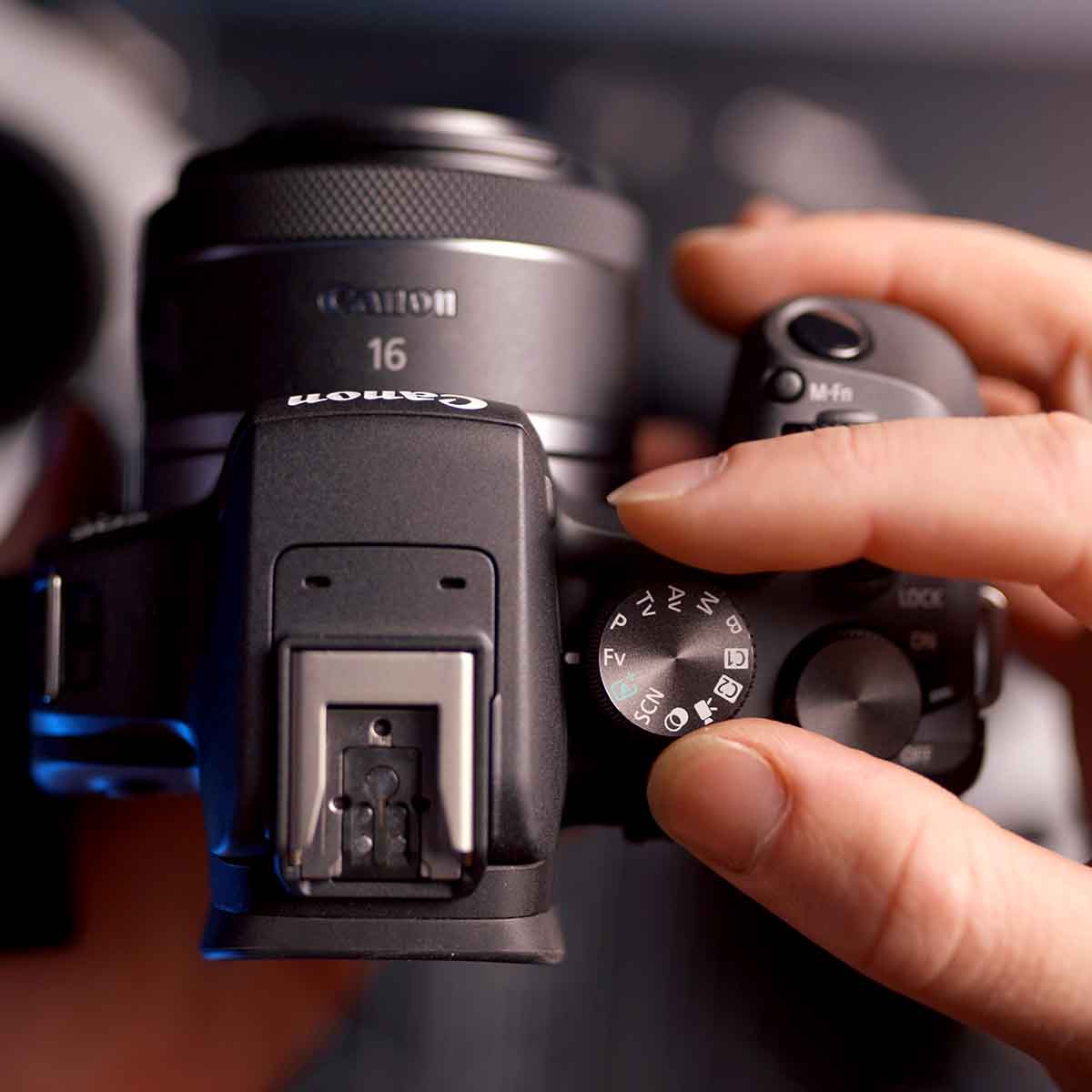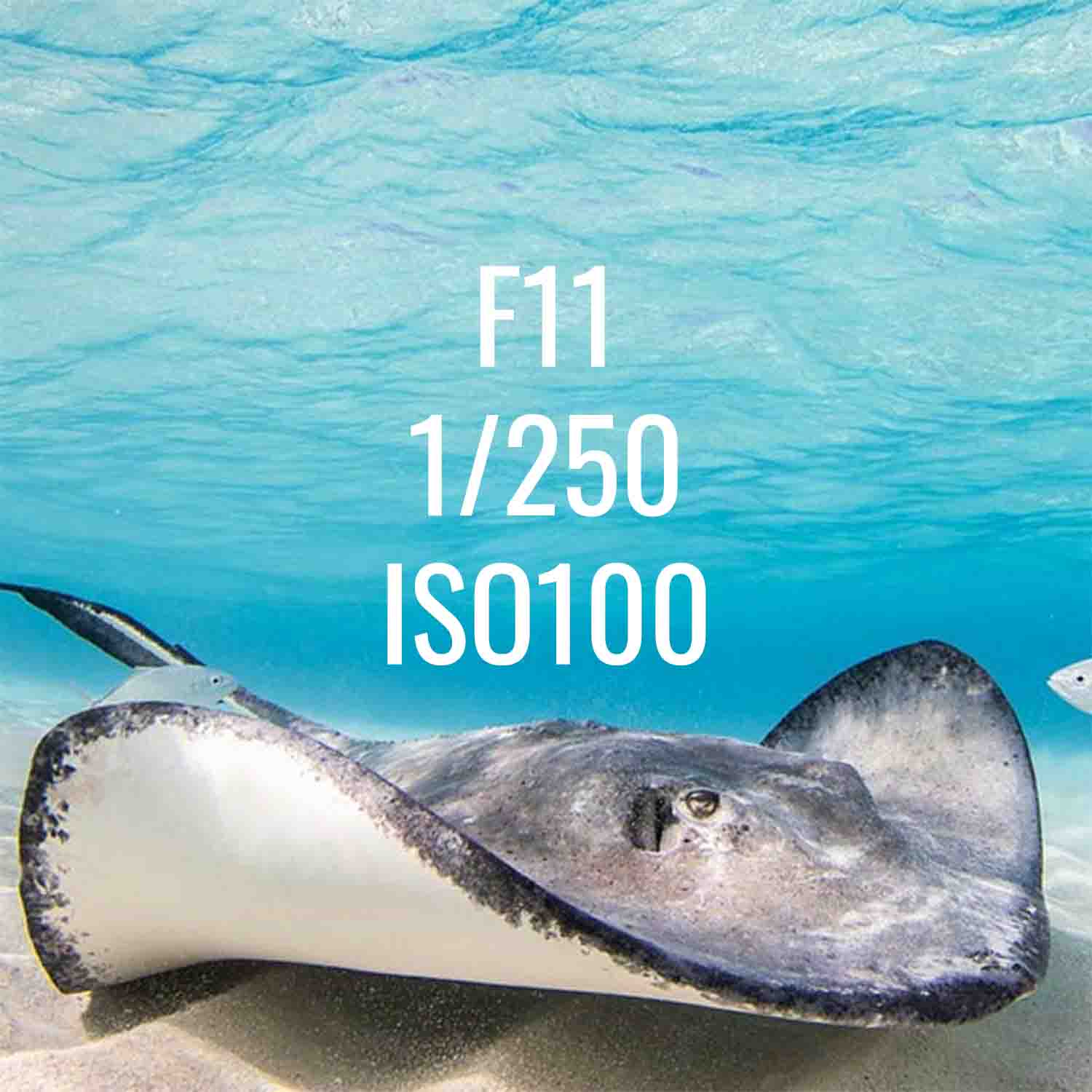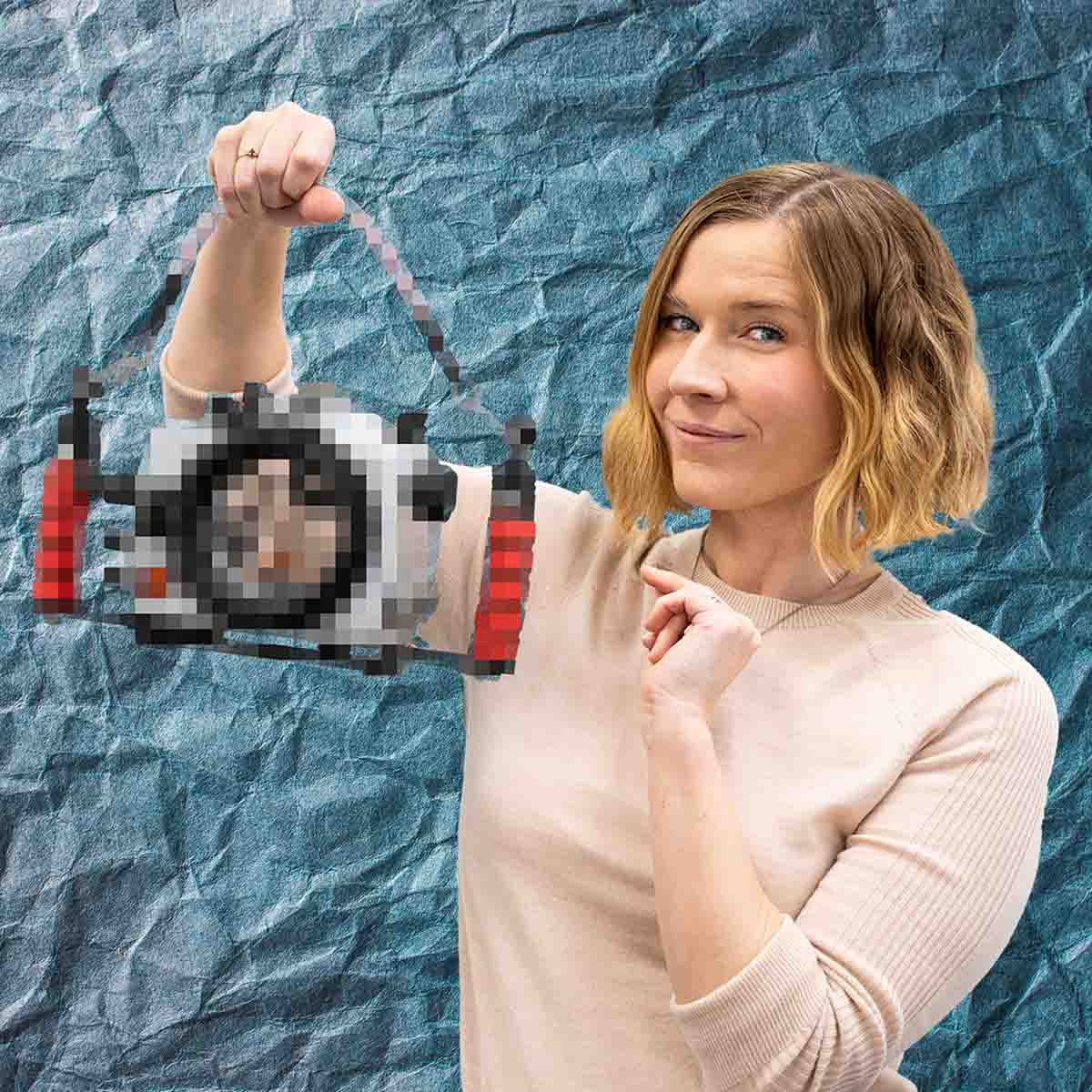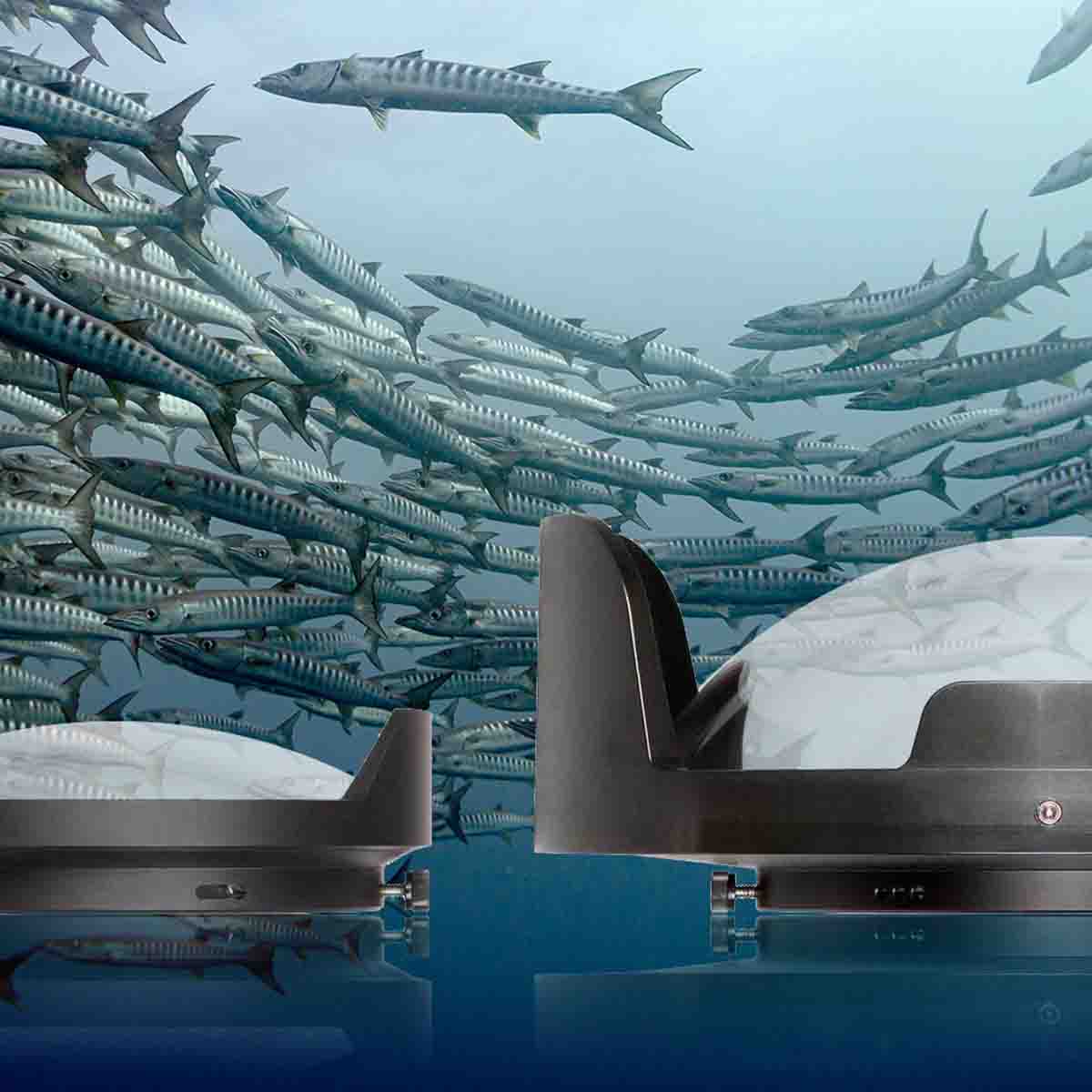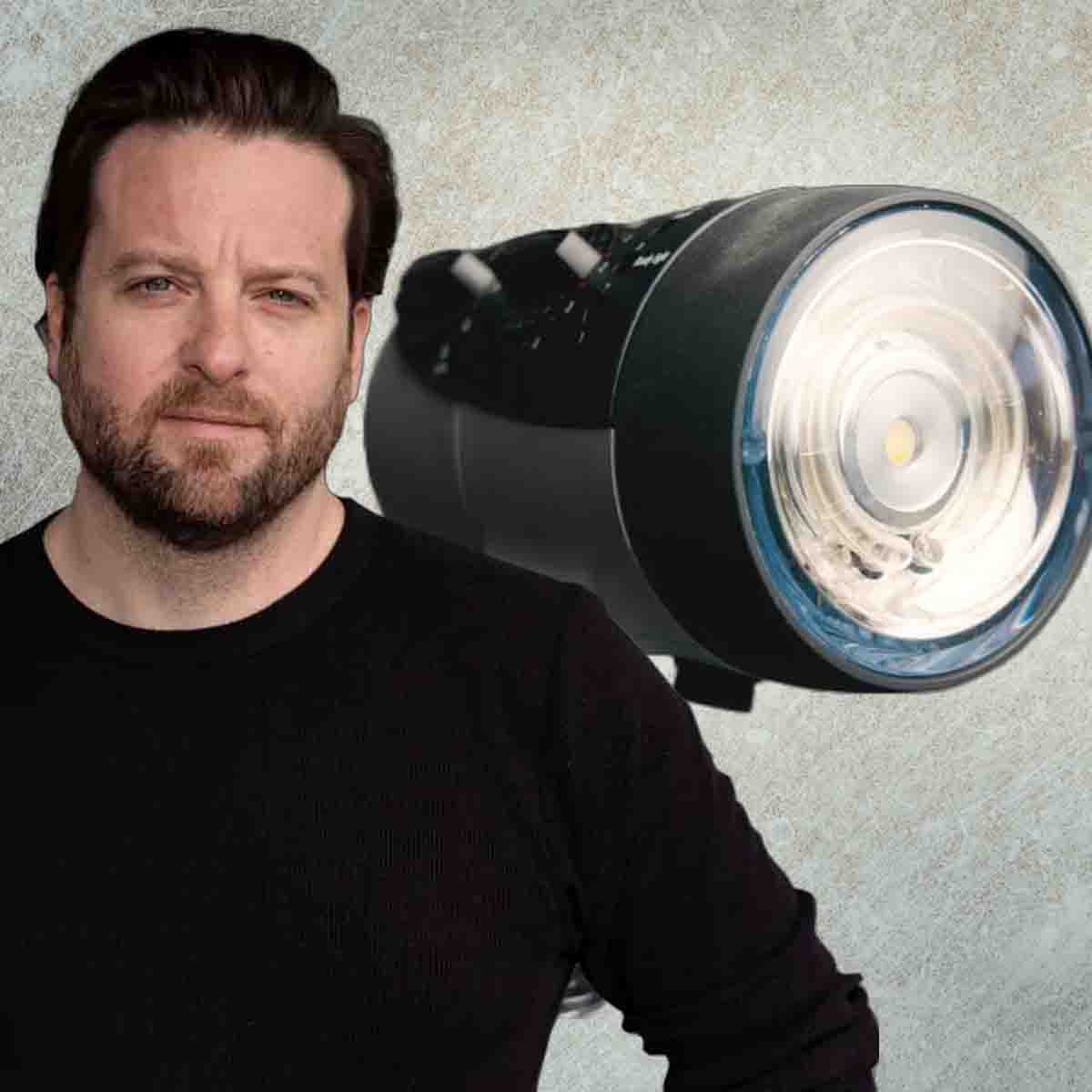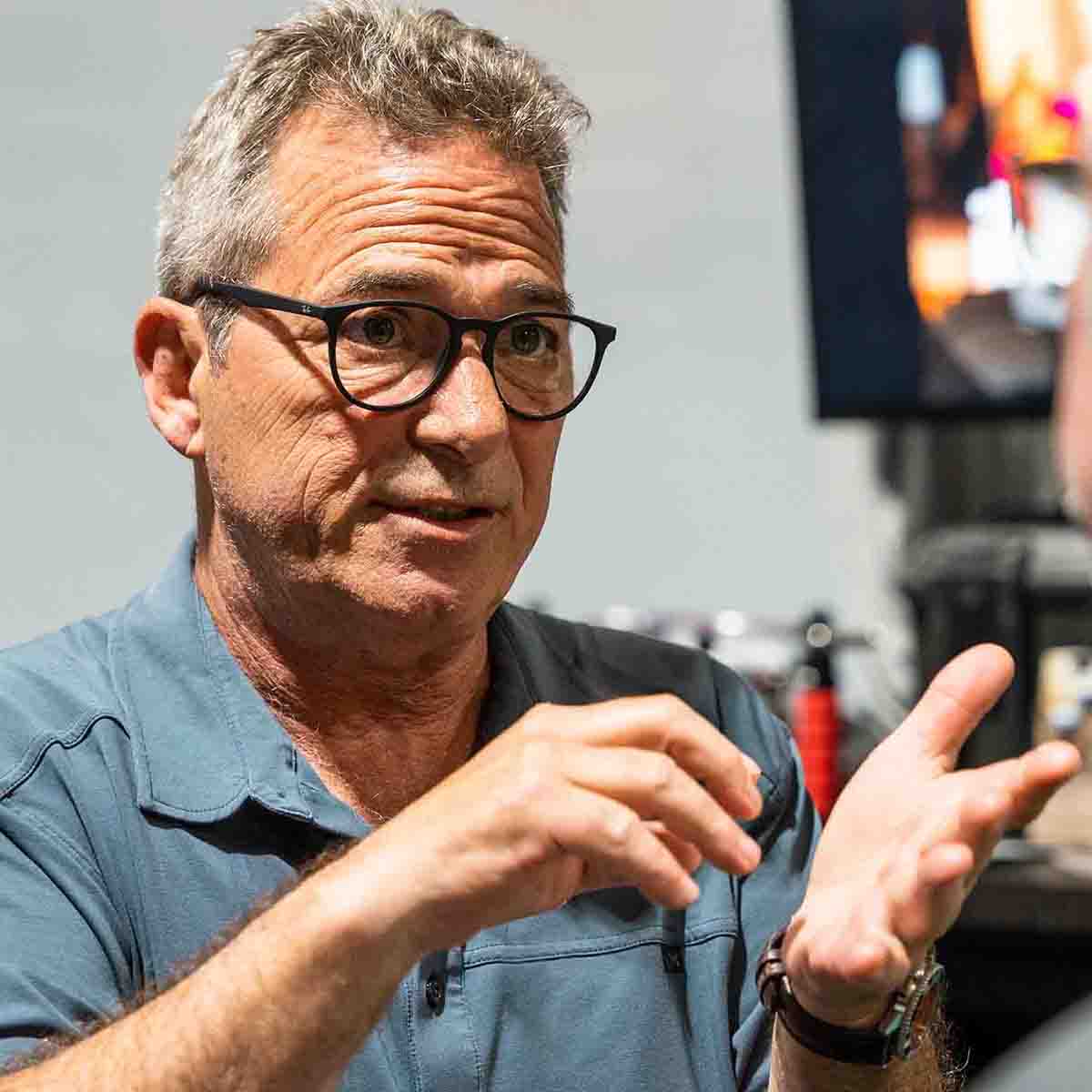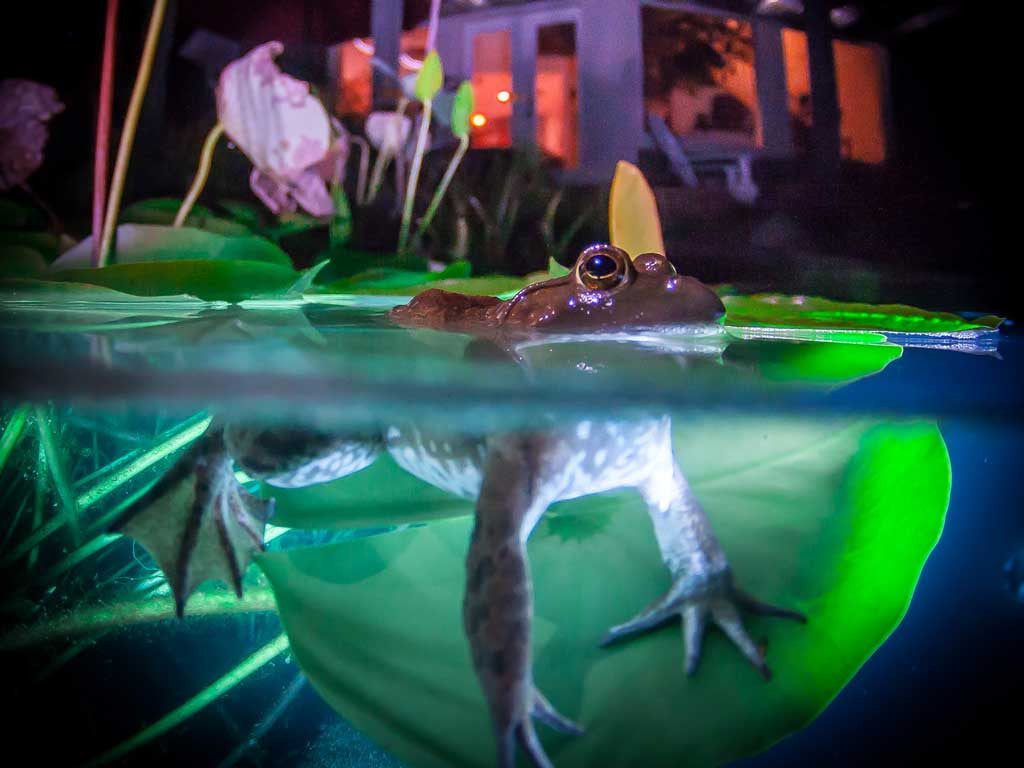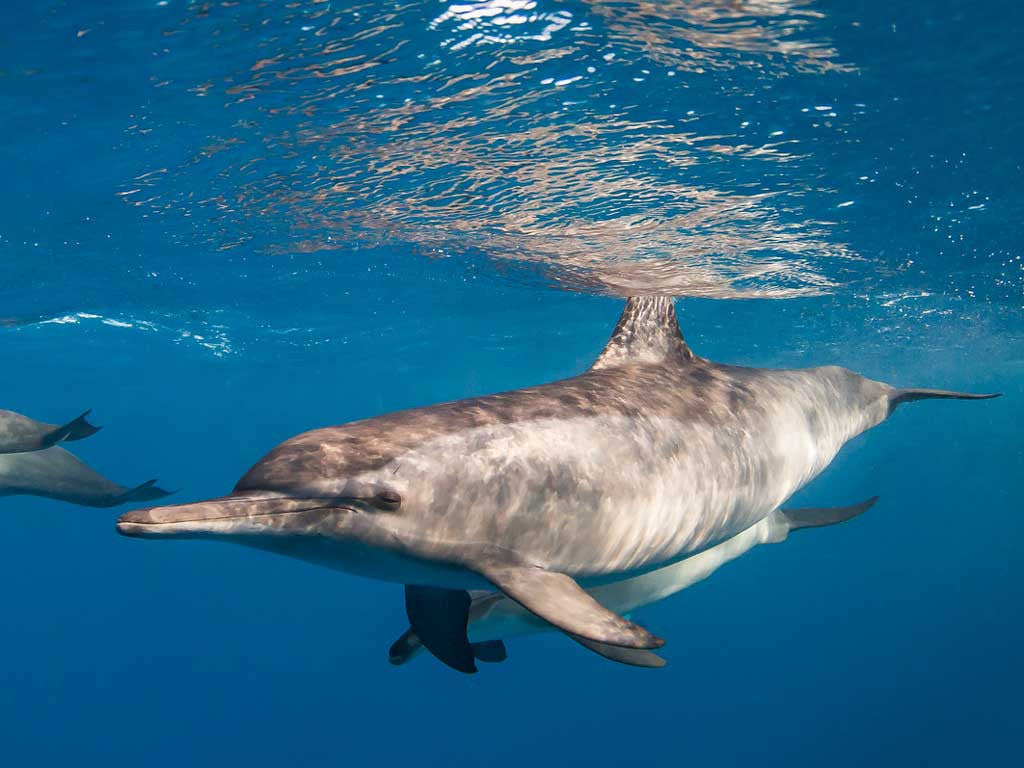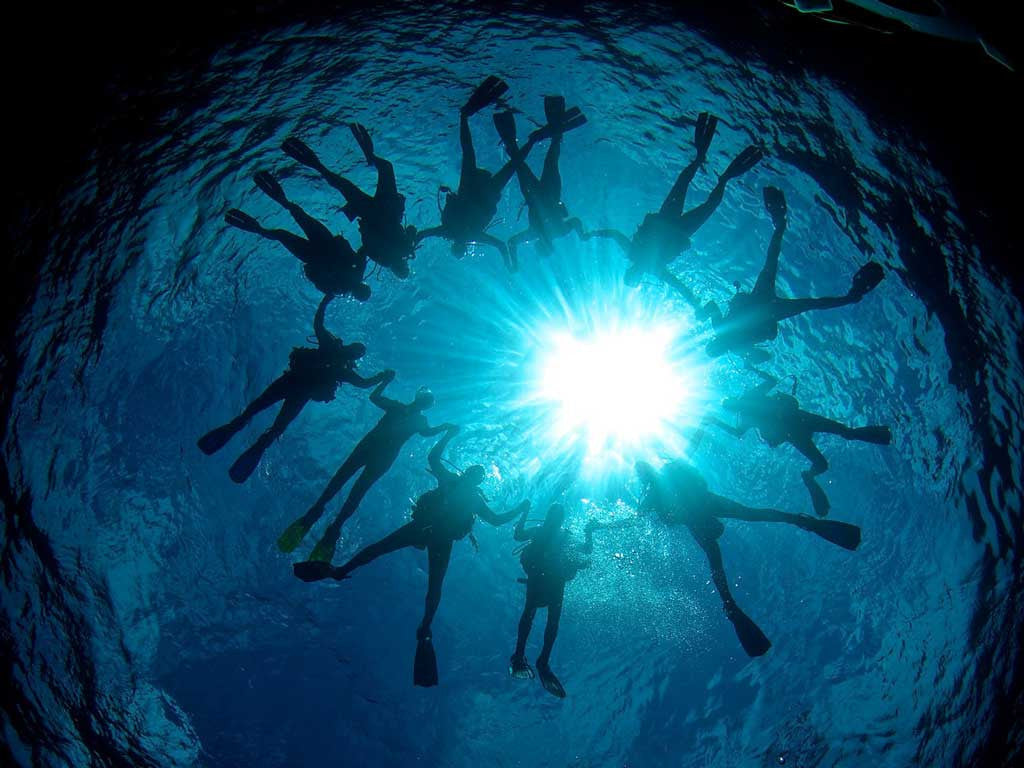Natural Swimming Pools have been growing in popularity as an environmentally friendly alternative to the harsh chemicals found in traditional pools. The concept is to collect rainwater from the gutters of your home to keep the pool brimmed, and use a large quantity of aquatic plants like lilies and lotus to naturally filter the water. A liner covers bottom of the pond, and walls separate the swimming area from the natural regeneration beds. The regeneration beds are lined with gravel instead of soil, forcing the plants to collect nutrients from the water and helping to keep it clear.
The Life Aquatic
Over time, a small ecosystem will establish itself in the Natural Swimming Pool. Fish are not usually included in these pools, but with supplemental filtration they can live harmoniously with the plants. One advantage of Paddlefish over more common choices is that they are filter feeders, continuously swimming in the water column, mostly eating microscopic plankton and not stirring up the bottom.
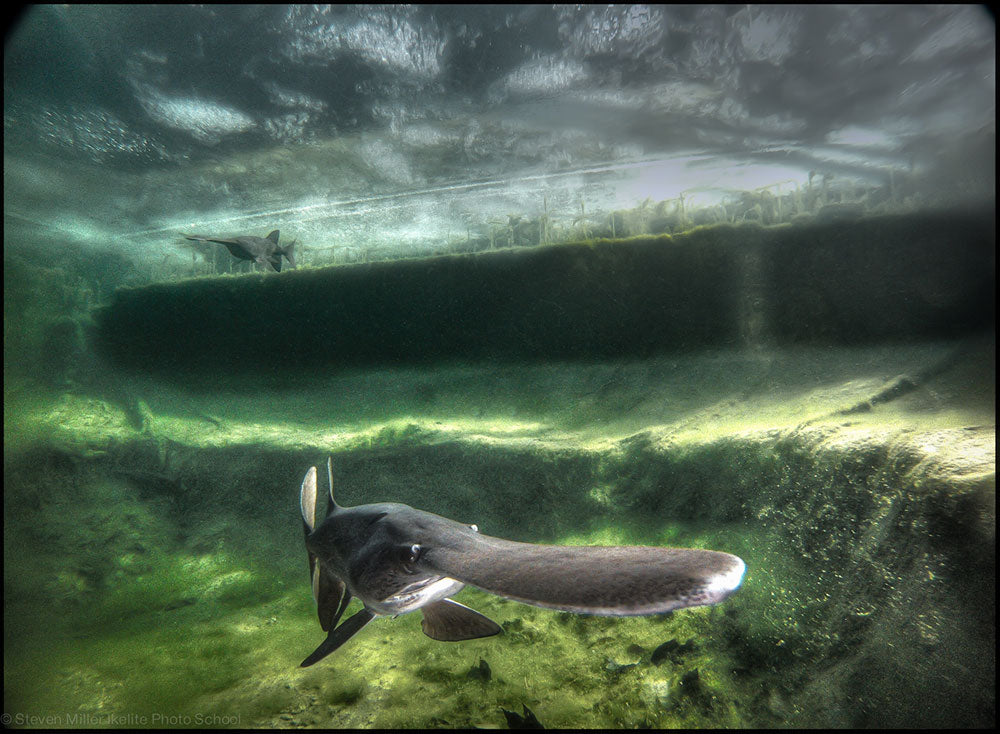
Lowering the boom
When the pool freezes over the ice diffuses the light. The water becomes very clear with no wind movement above and nothing much growing in the water column. This is a great time to shoot wide angle images. However, the difficulty shooting wide angle here is that you can't get into the water without stirring up the bottom. A boom allows me to lower the camera housing into the pool without disrupting the clarity. It has limited range depending on where you set the tripod up, but it pans and tilts nicely, using about 50-70 pounds behind it as a counter weight.
My ulterior motive with the boom was to solve the classic over-under (half-in, half-out of the water) problem, where one half of the frame is so much darker or lighter than the other half. The ideal solution is blending multiple exposures into a single image, but this involves tethering the camera and controlling it with a laptop. I'm still experimenting with cabling, so for now I rely on a custom intervalometer set-up. I set it to go off every few seconds and hope for a good frame, since I can’t see what I'm shooting. Unfortunately this makes changing exposure impossible, and tight composition is pretty tricky.
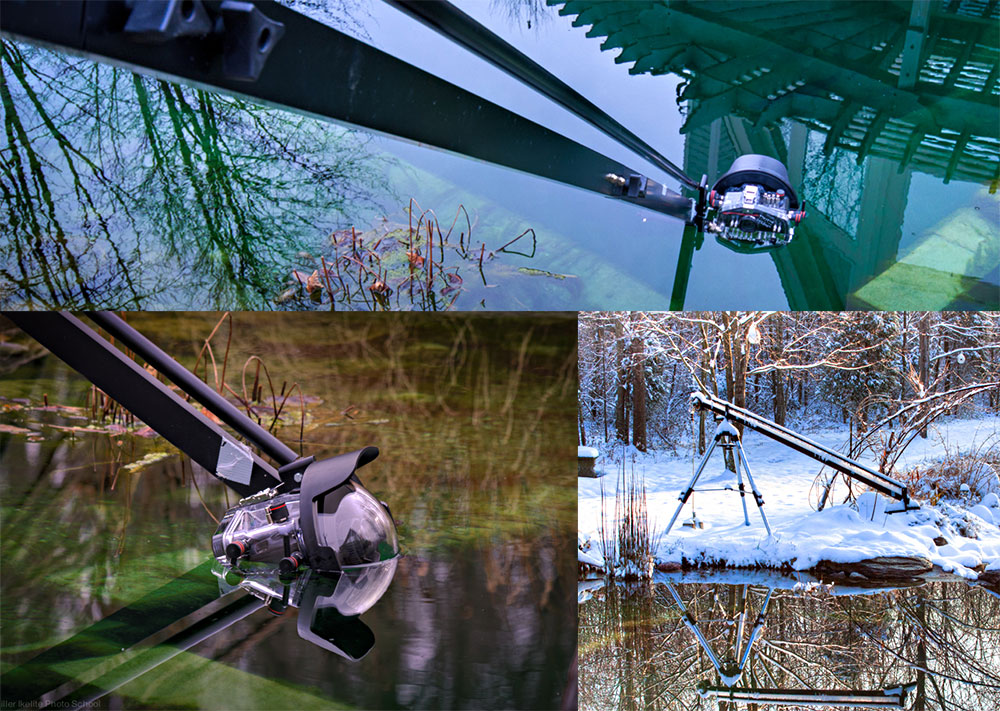
Small critters
Macro photography subjects are plenty, like this tiny Boatman, or Oarsman, clinging upside down to a Lilly leaf. He's only about an inch long.
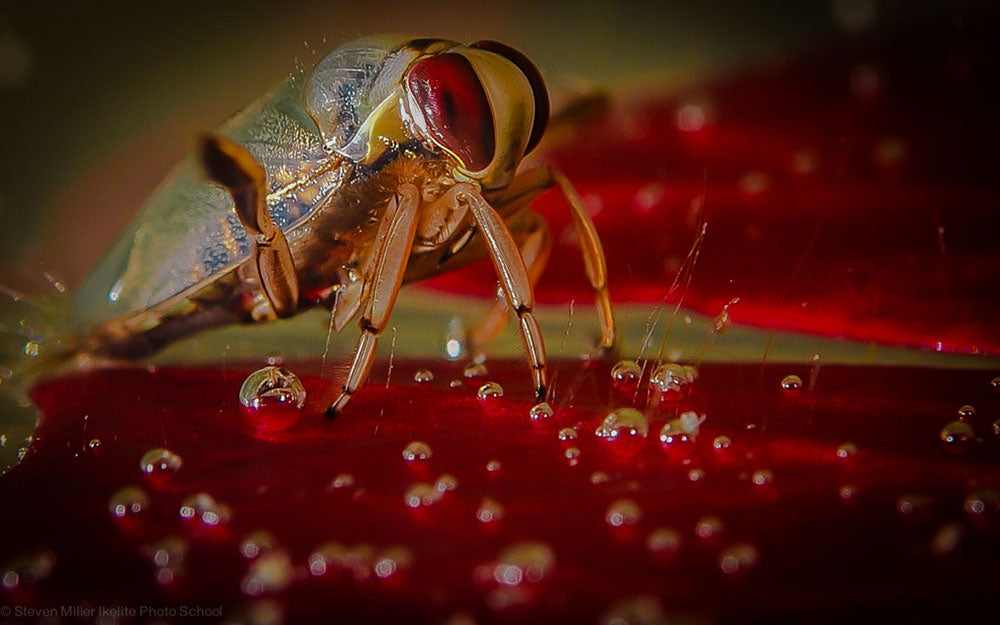
Several varieties of frog found their way to the pool in the first year, a large bullfrog is a year round resident, and in the spring we have the annual invasion of hundreds of chorus frogs. They will stay a week or two, singing all night while they climb all over each other.
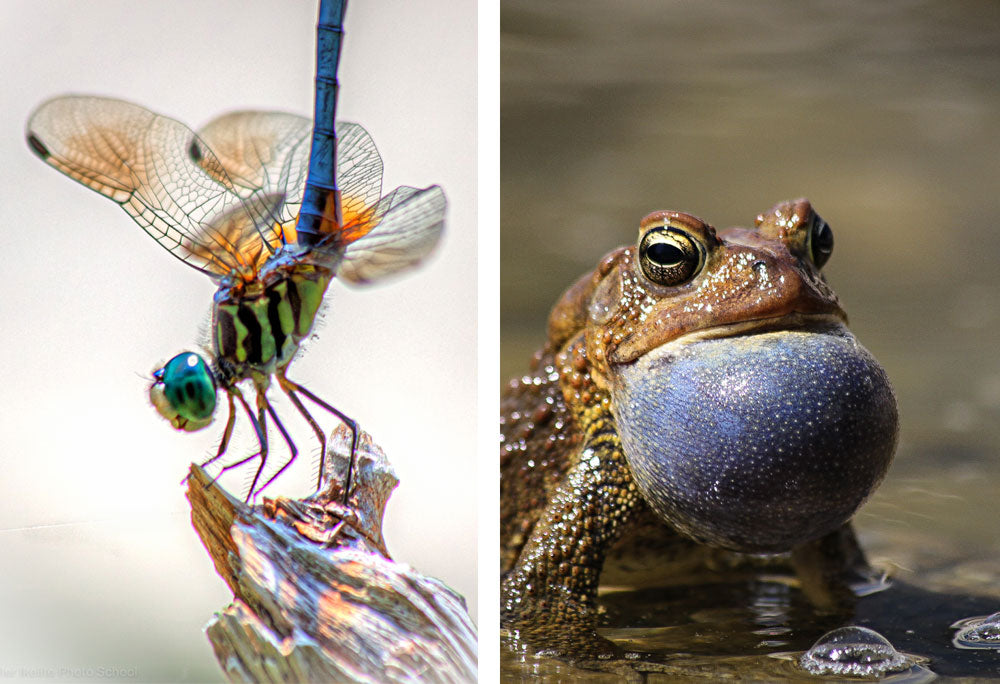
Then a few weeks later millions of baby tadpoles will move from the pool to the woods.
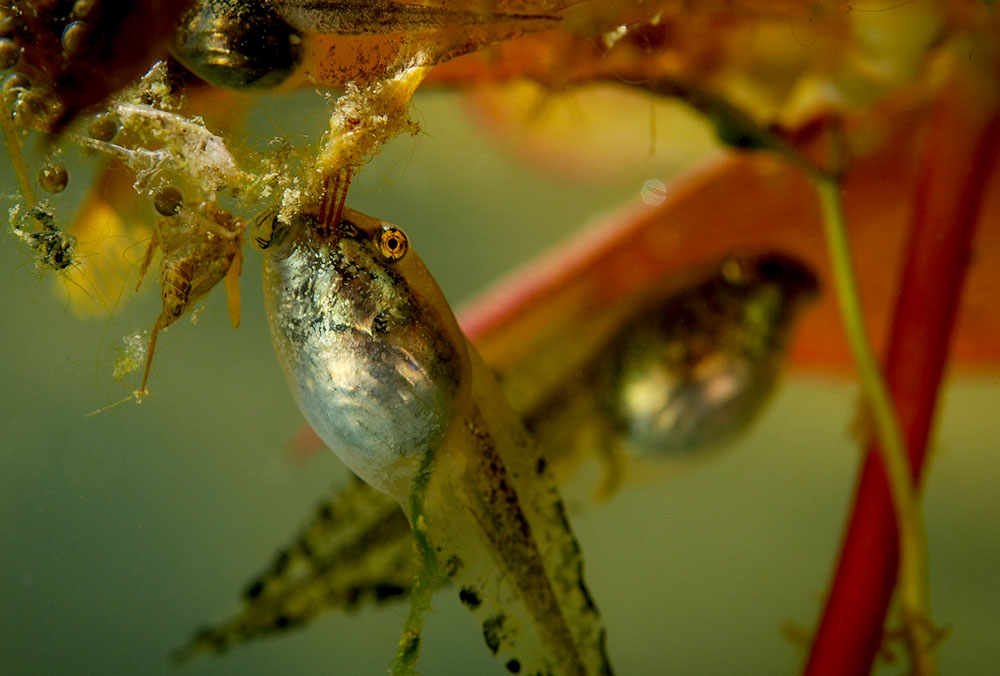
Topside views
Part of the fun of this backyard underwater studio is actually topside. As long as you don’t mind the extra wear and tear, you can leave tripods and light stands in place. Then, when you see unusual light and colorful skies, it only takes a minute to grab a stunning image series.
Every photographer knows that the magic light around dawn and dusk changes quickly. We seem to get our best colors at dawn in our backyard studio, and the coloration is typically brief!
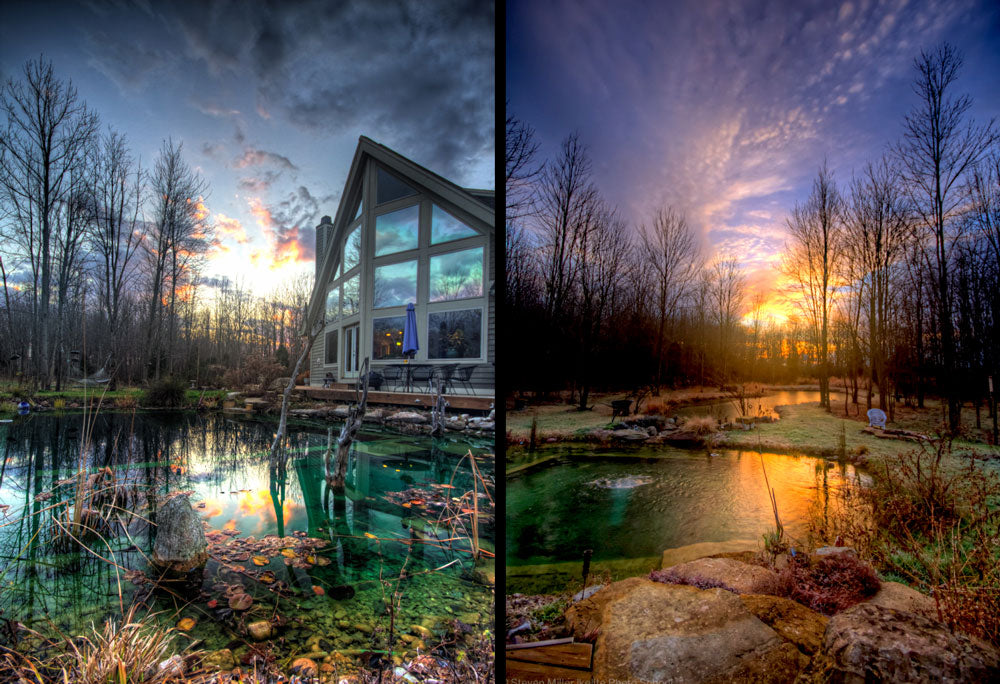
A work in progress
I haven’t gotten the image that I had imagined yet, but I always learn something from experimenting! My ultimate shot list includes time lapses of the ice forming from underneath, and long exposures of the stars at night. There's also lots of opportunity for creative lighting setups to be be fashioned along the way. The possibilities are endless, and when I do travel I often find inspiration for new things to try when I get back to my own backyard!




